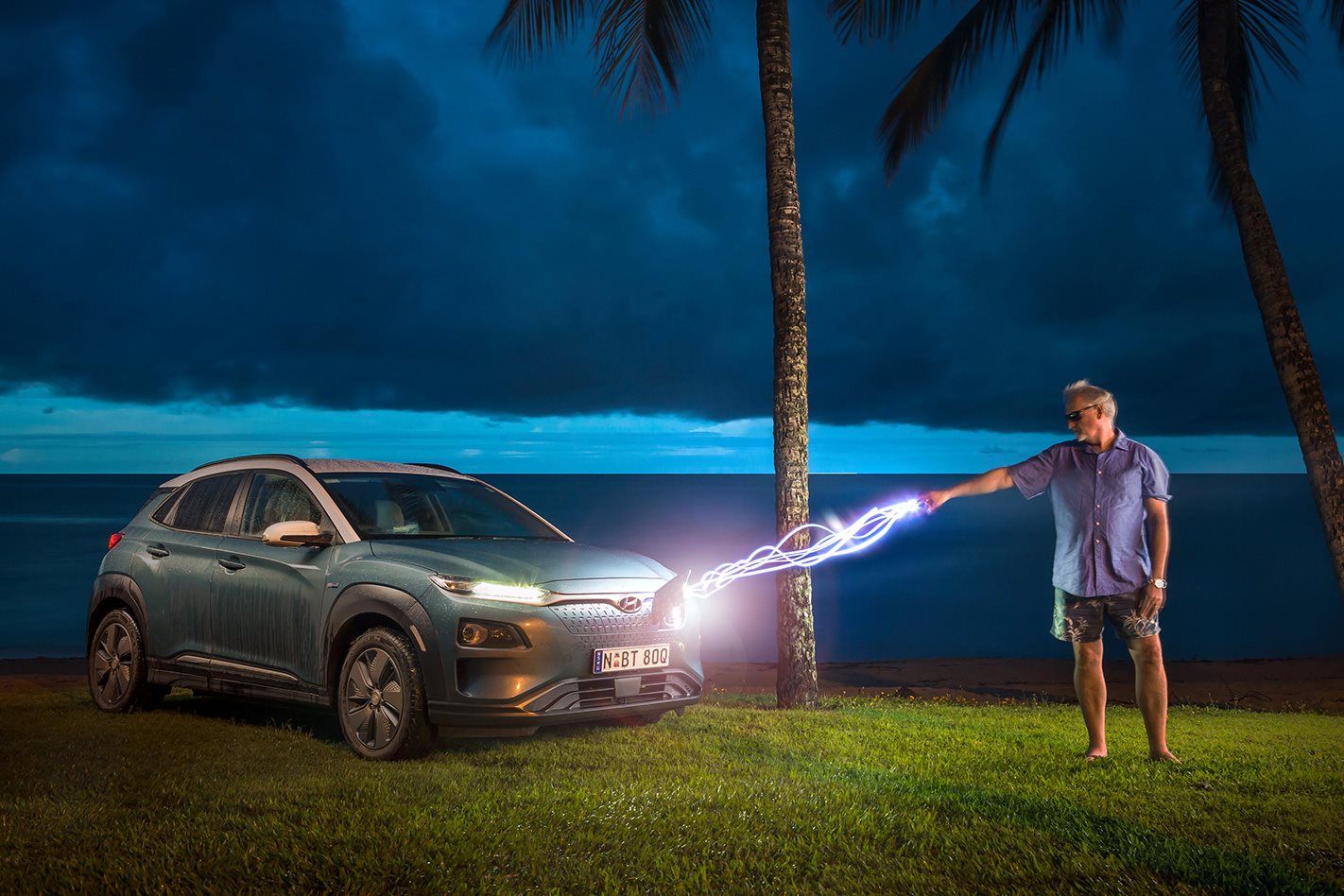Sometimes you just have to be careful what you wish for, I thought to myself as we touched down at Brisbane Airport in late afternoon gloom. Months earlier I’d pitched the idea to editor Inwood of a road trip on Queensland’s so-called Electric Super Highway. Now the story had suddenly been galvanised into reality by the launch of Hyundai’s Kona Highlander EV.
Photographer Thomas Wielecki and I have teamed up on plenty of road-trip assignments, but this one promises to be a little different, since for the first time it’s fuelled not by the petroleum industry, but by green electricity.
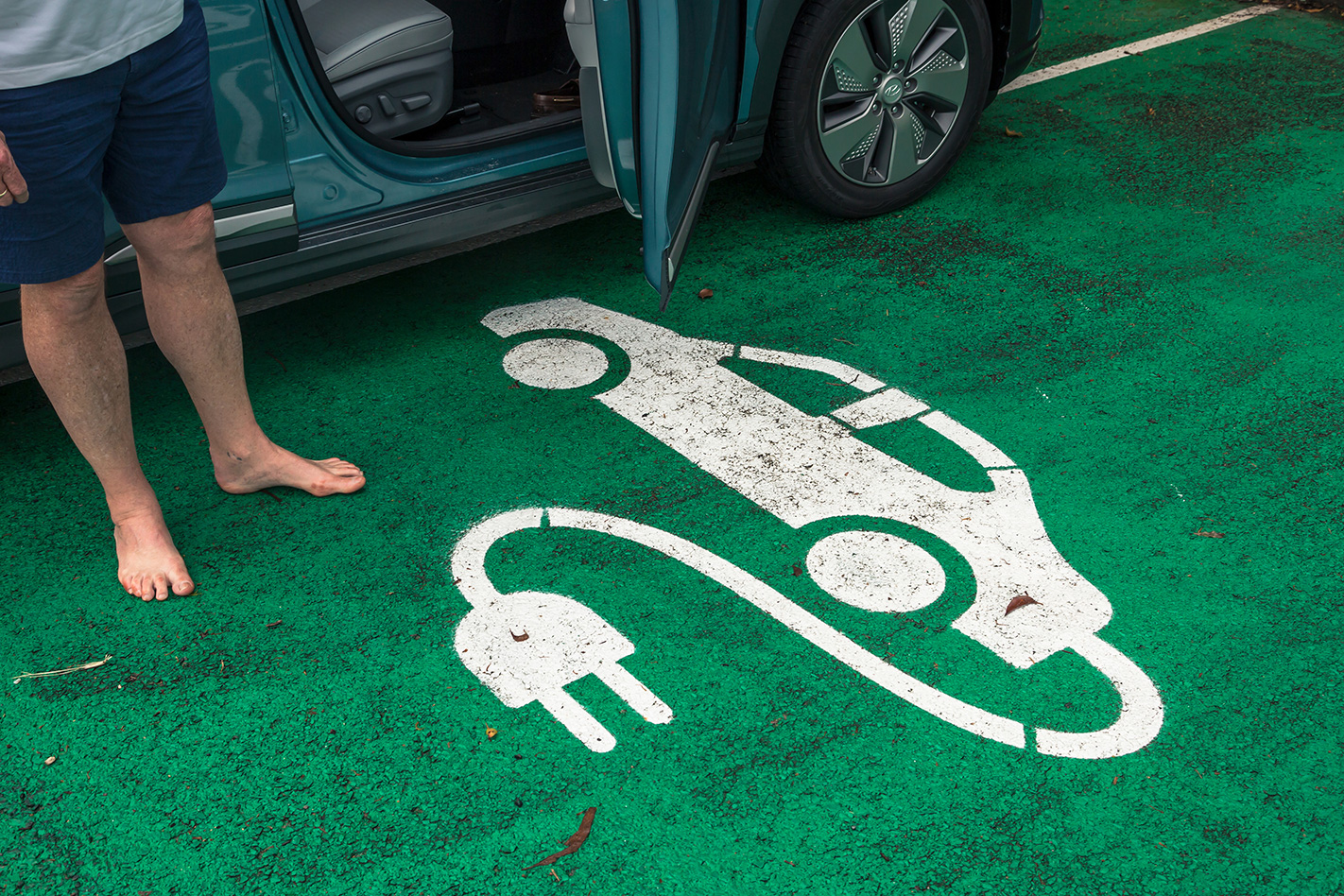
Queensland’s Labor Government stole a march on its southern rivals in 2018 when it announced the completion of a network of fast charging stations stretching from Coolangatta to Cairns, and inland from Brisbane to Toowoomba.
Such infrastructure initiatives are a crucial step in convincing motorists to take the leap from tried-and-proven fossil fuel into the less-certain world of electric power.
With the concept of EVs still so alien to most Australians, we need to be confident that these radical new cars won’t leave us stranded.
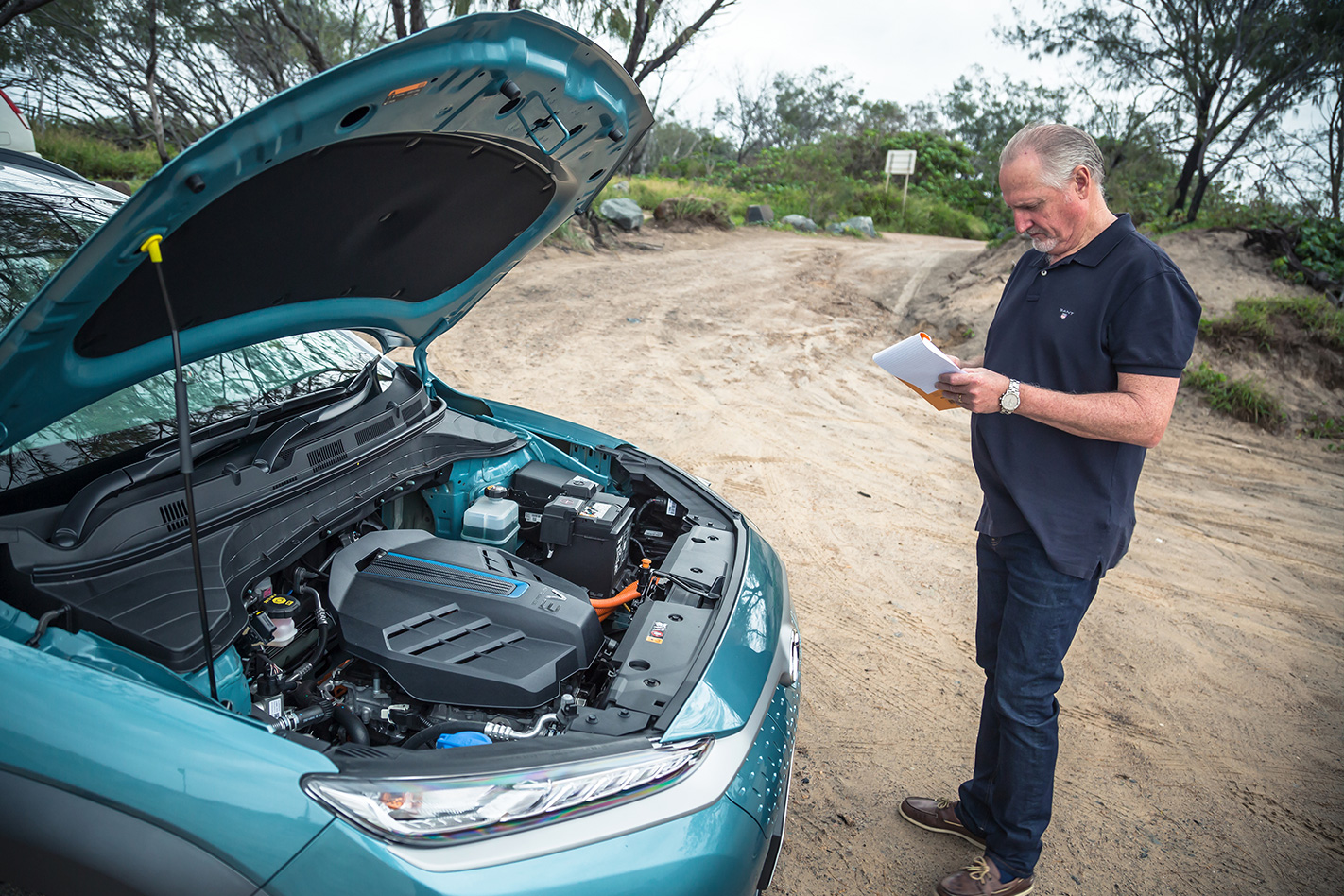
So, our plan is to use the network of 14 DC fast chargers dotted along an 1800km length of the state’s glittering coastline, to see if the Kona can be trusted to carry us across Australia’s vast distances in an efficient and reliable way.
The 50kW DC fast chargers are reportedly capable of recharging the Kona’s 64kWh lithium-ion polymer battery to 90 percent in 60 to 90 minutes and are designed and manufactured in Brisbane by local outfit Tritium.
The charging network is managed by Yurika, a green-energy offshoot of Energy Queensland, but the bit that really appealed to editor Inwood is the fact our trip won’t cost a dime, thanks to an extension of the State Government’s initial six-month free charging period.
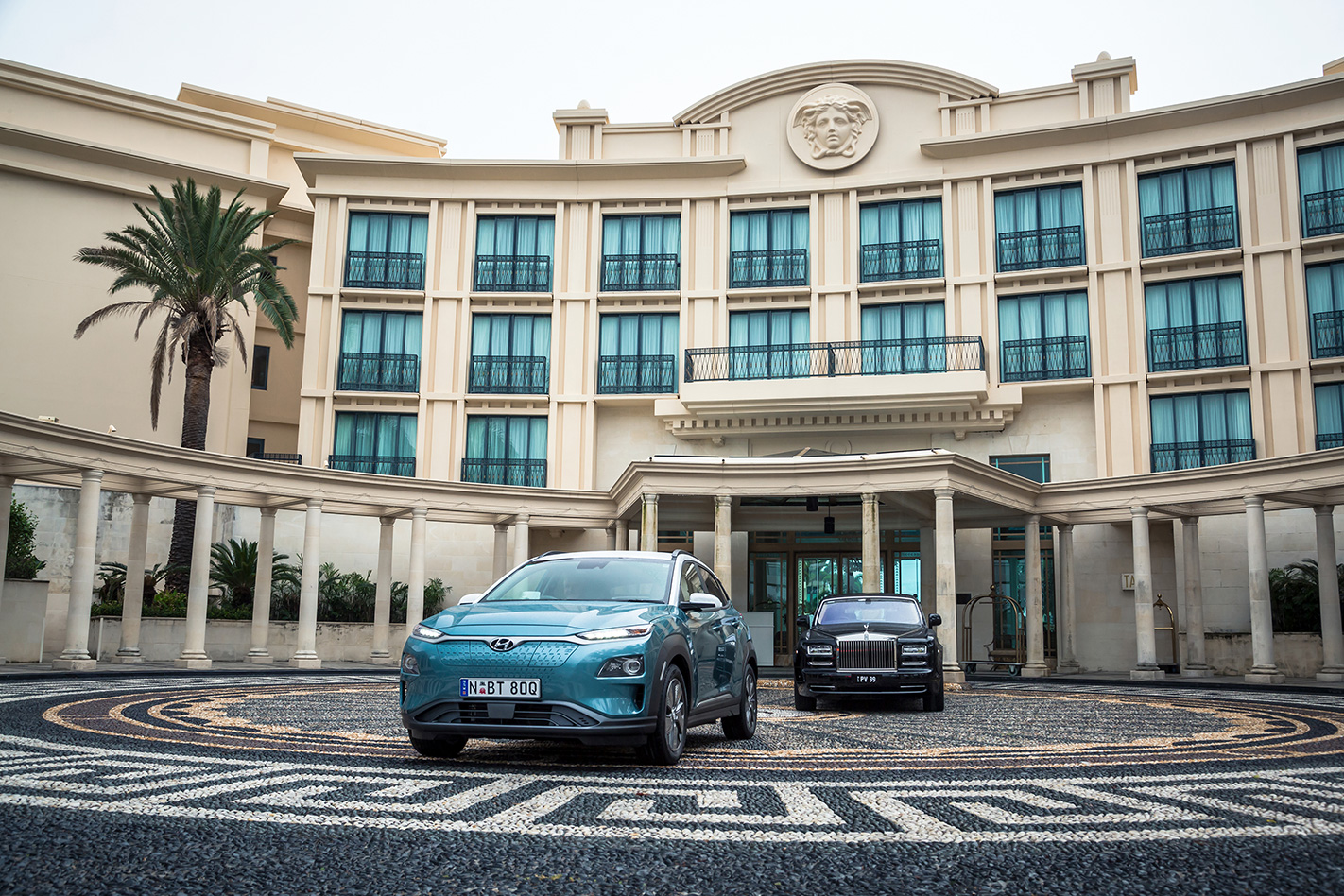
Sitting as arranged at Virgin Valet, the Kona is attractive but not overly radical looking. Unlike a Jaguar I-Pace, a Tesla or a Nissan Leaf, it’s an EV variant in a model range with multiple propulsion options.
The EV version is manufactured on the same line as its internal-combustion engine (ICE) siblings at Hyundai’s Ulsan plant in South Korea, so shares many of its body panels and other components. It’s significantly heavier, though, thanks to its large battery which tips the weight of this top-spec Highlander variant to a hefty 1743kg, compared with 1383kg for the equivalent 2.0-litre MPi model.
Despite having landed in Brisbane, we first need to head for Coolangatta, to ensure we capture the highway’s full length. The range indicator is showing a near-brimmed 406km, so the 130km freeway run won’t be an issue, given Hyundai’s claimed 400km highway, or 450km urban range.
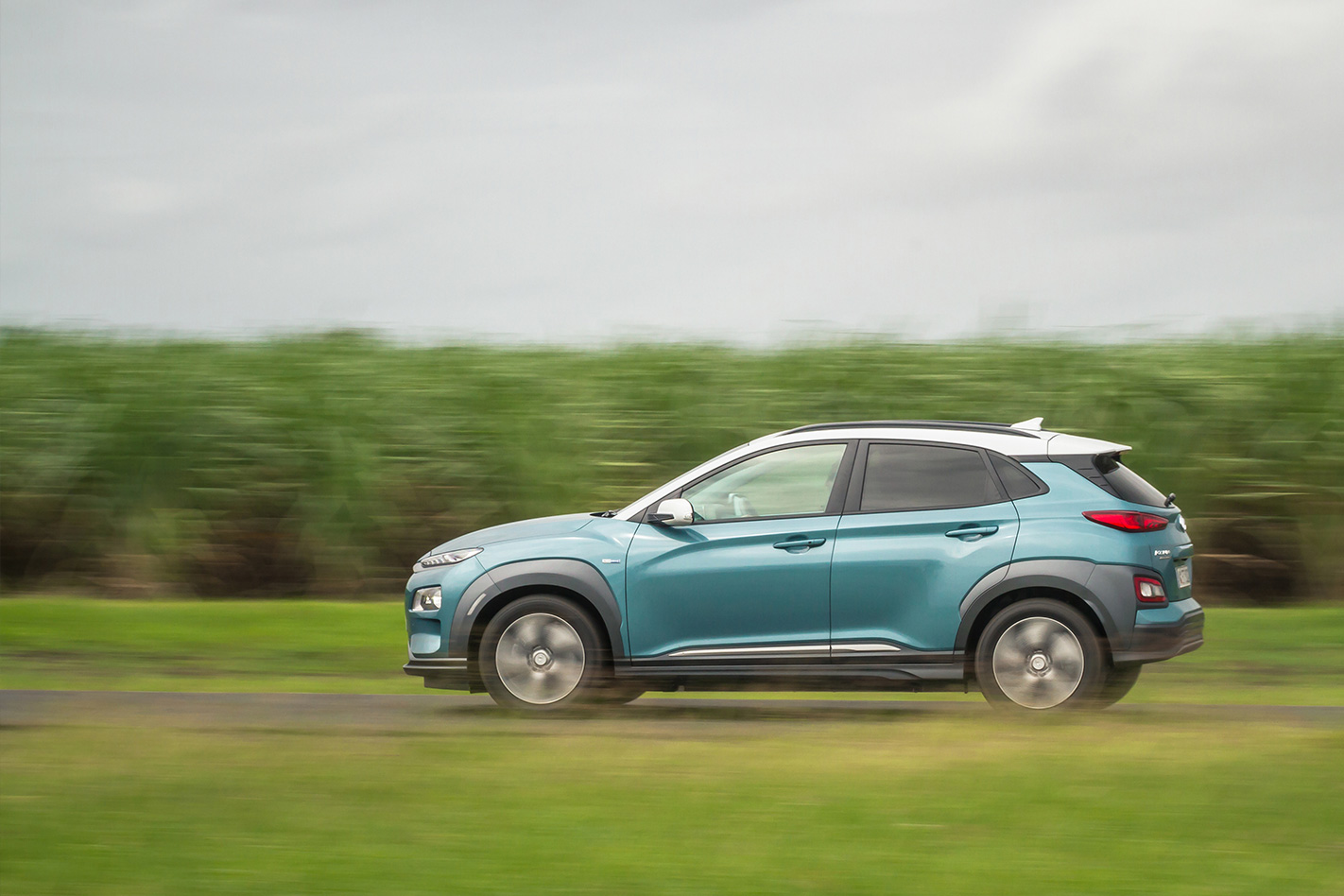
A jaunty little digital chime plays on start-up but the Kona is otherwise so quiet when running its engineers have installed a device that projects a low, harmonic sound at speeds below 30km/h to alert pedestrians.
“Is it going yet?” queries chief technician Wielecki as we glide silently out into the night, the lack of engine noise, the instant torque and rapid acceleration making an immediately positive impression.
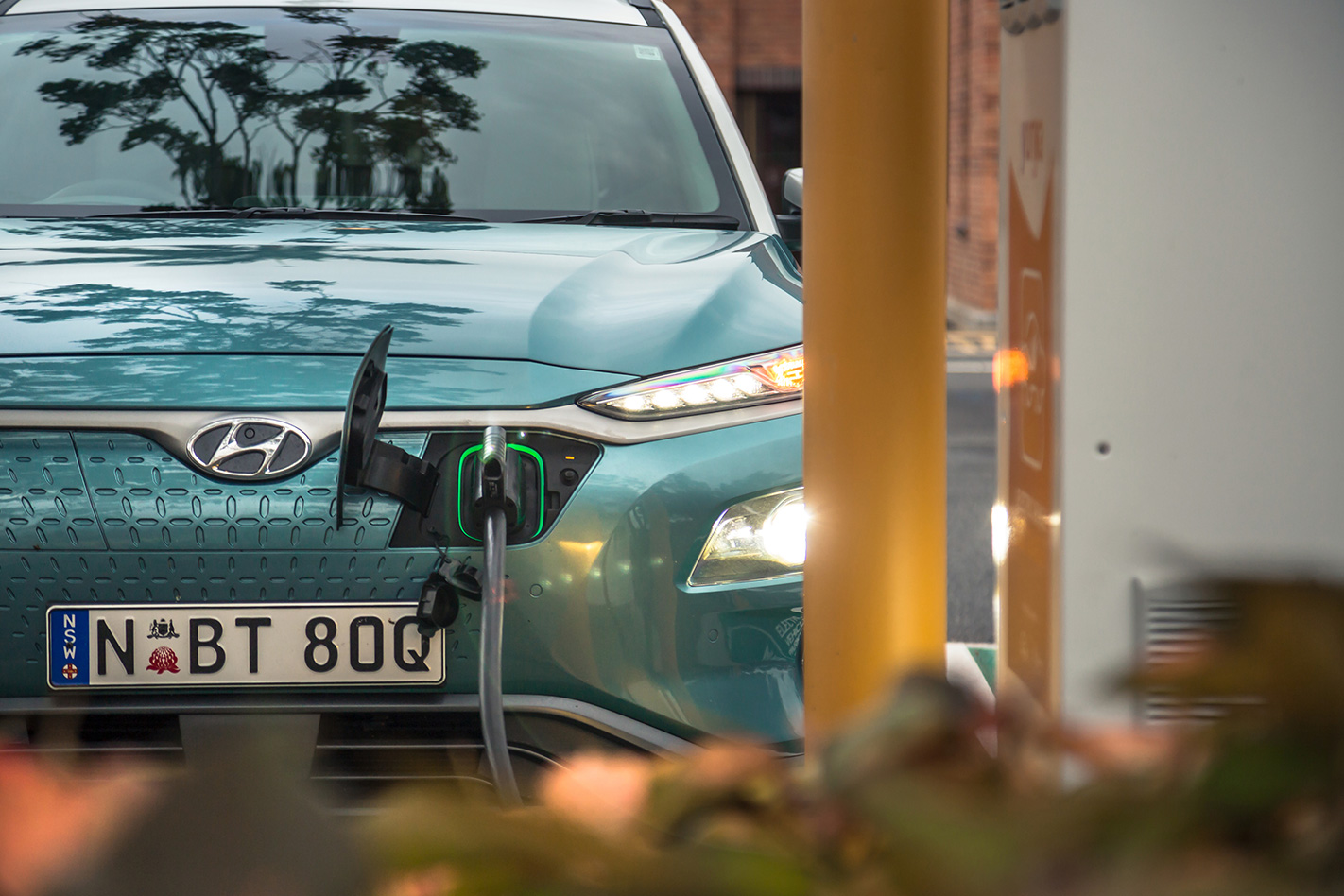
We’ve booked a motel close to a charge point in Coolangatta, but decide on arrival that we’ve plenty of range to get back to our first appointment in Brisbane in the morning, where a recharge is possible.
Over a steak dinner at the local surf club, Wielecki and I reassure each other about the missed charging opportunity: “She’ll be right, won’t she?”… “Ah, for sure … How far is Brisbane again?”
It’s an ear worm that’ll become all too familiar in the days ahead, along with furtive glances at the range predictor, the battery status and the distance to our next charging station.
The weather, too, is a bit of a worry as the tail of Cyclone Trevor is still wagging the next morning as we grind towards Brisbane in bumper-to-bumper traffic.
The Kona’s interior, like the exterior, is far from radical, characterised by a floating centre console and the use of light-coloured plastics and trim that create a fresh and airy vibe. Much of the layout and equipment is familiar Hyundai fare but there are some obvious differences, like the cross-shaped array of drive-by-wire buttons for selecting P-N-D-R and the sat-nav, with its range of EV-specific sub-menus.

It does take a while to adjust to the aggressiveness of the regenerative braking, which, on its maximum setting, slows the car dramatically when you come off the throttle. Wheel-mounted shift paddles allow you to adjust the regenerative effect.
Recharged, we exit Brisbane with the battery showing 95 percent and the trip computer predicting a 430km range. Ahead are charge points in Cooroy (129km), Maryborough (262km), and Childers (322km), which looks about the limit of our ambition for the day.
Rain falls solidly as we head north towards the Sunshine Coast, half-blinded by the spray from 18-wheelers. I briefly experiment with the three selectable drive modes – Eco, Comfort and Sport – before settling on Comfort as providing the best balance of powertrain response.

With 150kW and 395Nm on tap, the Kona cruises effortlessly at 115km/h with strong reserves for overtaking: put the foot down at this speed and it surges forward, the speedo effortlessly kissing 130km/h, with plenty more to come.
We eventually roll into Childers at 6:30pm with 73km of range and 19 percent charge remaining, only to dump our gear at a nondescript motel before heading back out to find the charging station. The Yurika-branded chargers are easy to locate in the darkened RV parking lot, thanks to twin LED lights that gleam like robotic eyes in the gloom.
I connect the charge cable via a flap on the Hyundai’s grille and we wander back through the drizzle to find some food. It occurs to me that enforced delays and wet shirts may well be the uncomfortable reality of life with an EV.
There are upsides, though, including an excellent meal at the Orchid Floral Thai restaurant, after which we head back out to find the Kona recharged to 94 percent and promising 418km of range.
After our own fitful recharge, thanks to the motel’s complimentary surround-sound of thundering semis, we head out on the road again. Hours later, we find the next charge point in Rockhampton near the town’s imposing council chambers, and plug in. The trip computer tells us we’ve travelled 350km since Childers, with 13 percent charge and 49km remaining, lending credence to Hyundai’s claimed 400km highway range.
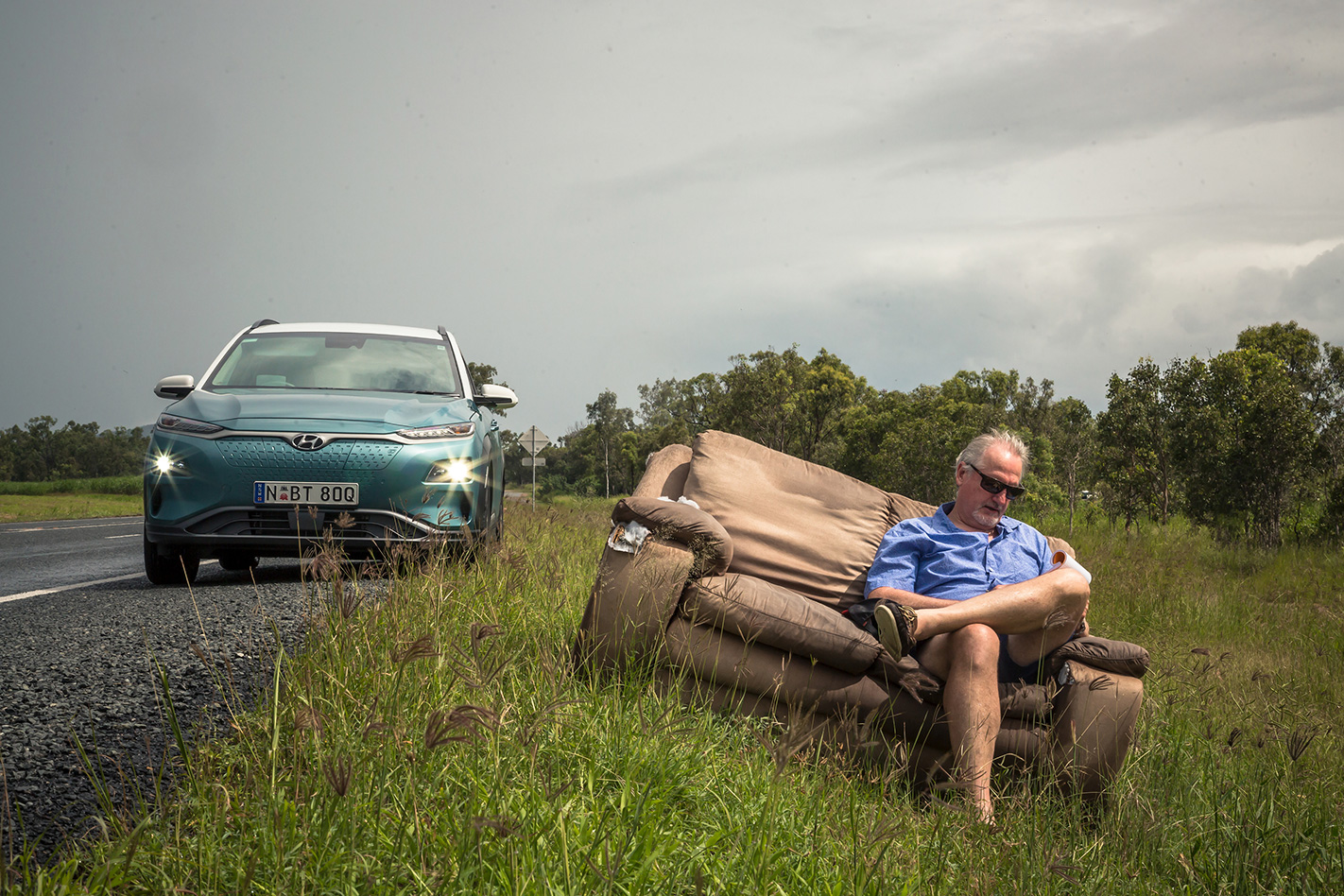
AS DAY THREE dawns it seems Queensland only knows one colour – slate grey. A phone call from my copper cousin further north warns that torrential rain overnight has closed the highway north of Ingham and we’re forced to contemplate where the story stands if we can’t make it to Cairns. We’re also soon aware of the impact that frequent photographic detours are having on the Kona’s range. Our planning hinges on the distance between charge points, but doesn’t allow for the off-piste excursions that are part of life on the road with Thomas.
Having left Rockhampton with plenty of range to make Mackay, the trip computer is now telling us we have barely enough juice. We cut the air-con and reduce speed to 100km/h, casting nervous glances at the dash, which at one point indicates 72km of range for a charge point distance of 69km. The low-battery warning comes on as we pass Sarina, showing just 7 percent.
I feather-foot it the final 36km to ‘Sugar City’, arriving with just 13km of available range and 4 percent battery charge, our lowest of the journey so far. We’ve covered 350km since our last charge at Rockhampton – admittedly much of it at 115km/h – but that’s still notably short of the claimed 400km highway range.
Keen to make up some kilometres, we unplug early and set off for Bowen, 192km up the highway. We recharge there without incident before embarking on the day’s final 200km leg to Townsville. The vast glittering nightscape of Queensland’s northern capital finally beckons at 8:30pm. Word on the wire is that the road north is still closed, but stars peek through the night sky and locals tell us the waters will recede quickly once the rain stops.
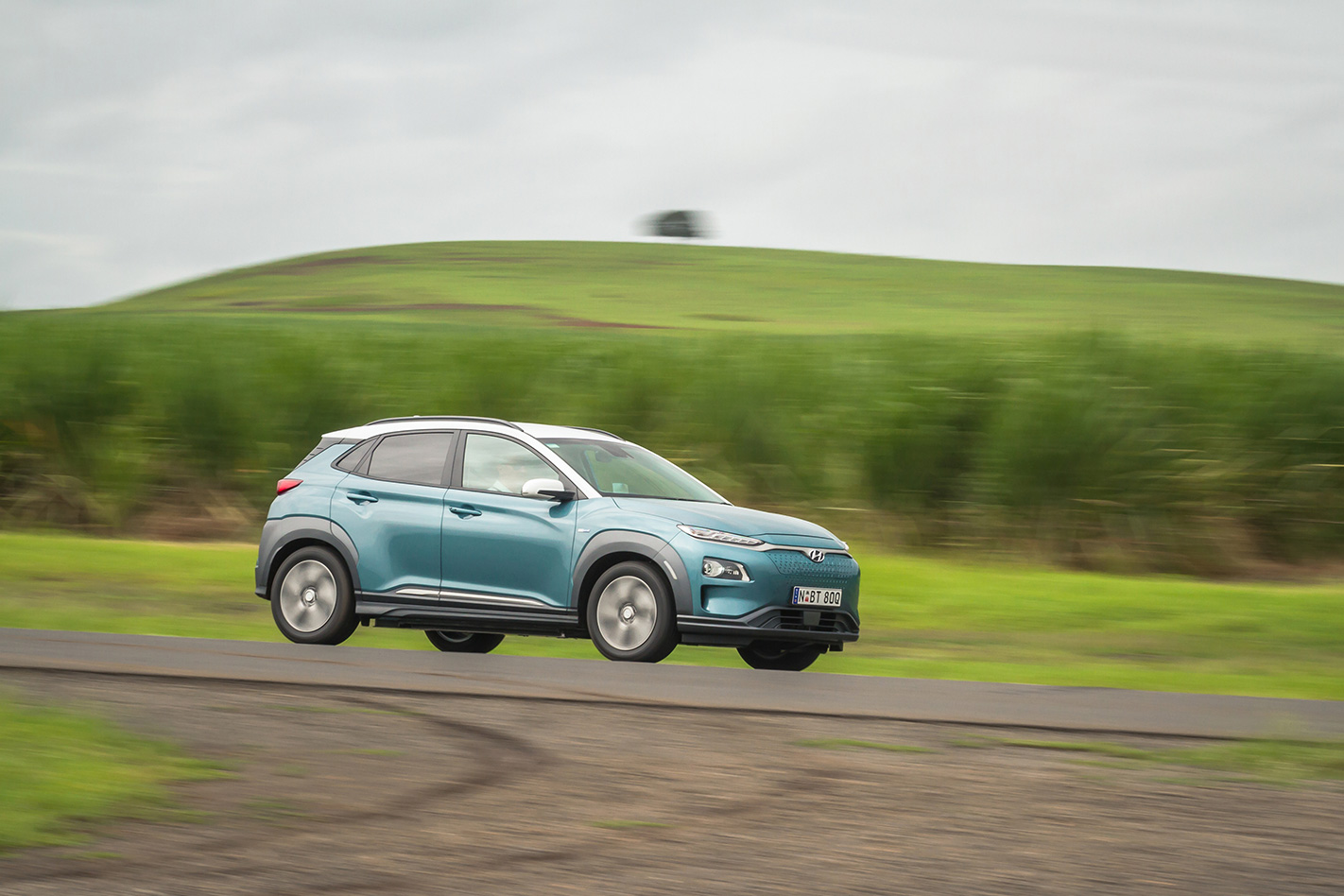
The Kona’s sat-nav leads us to a charge point in South Townsville, where we hit our first real charging snag of the trip: a diesel-sucking Prado sitting sulkily right where we need to be, blocking access. We find another option 20 minutes away but the whole palaver makes for a late finish.
Fortunately, the next day dawns bright and clear, with news from my cousin that the road is open again. Our predicted range after the previous night’s recharge was 382km, enough to make the 347km to Cairns, but with our early-morning photographic escapades in and around Townsville, I budget for a top-up in Tully, famously Australia’s wettest town.
All that rainwater seems to have frizzed Tully’s DC charger, though, and despite having a cable in the boot to connect to the AC charger alongside, at nine hours for a 0-to-100 percent charge, we don’t have the time it will take.
We need to get to Cairns with enough light to bag the final photography, but at 140km distant it’s right on the limit of the Kona’s available range. We agree to roll the dice, setting off with the trip computer warning against our folly.
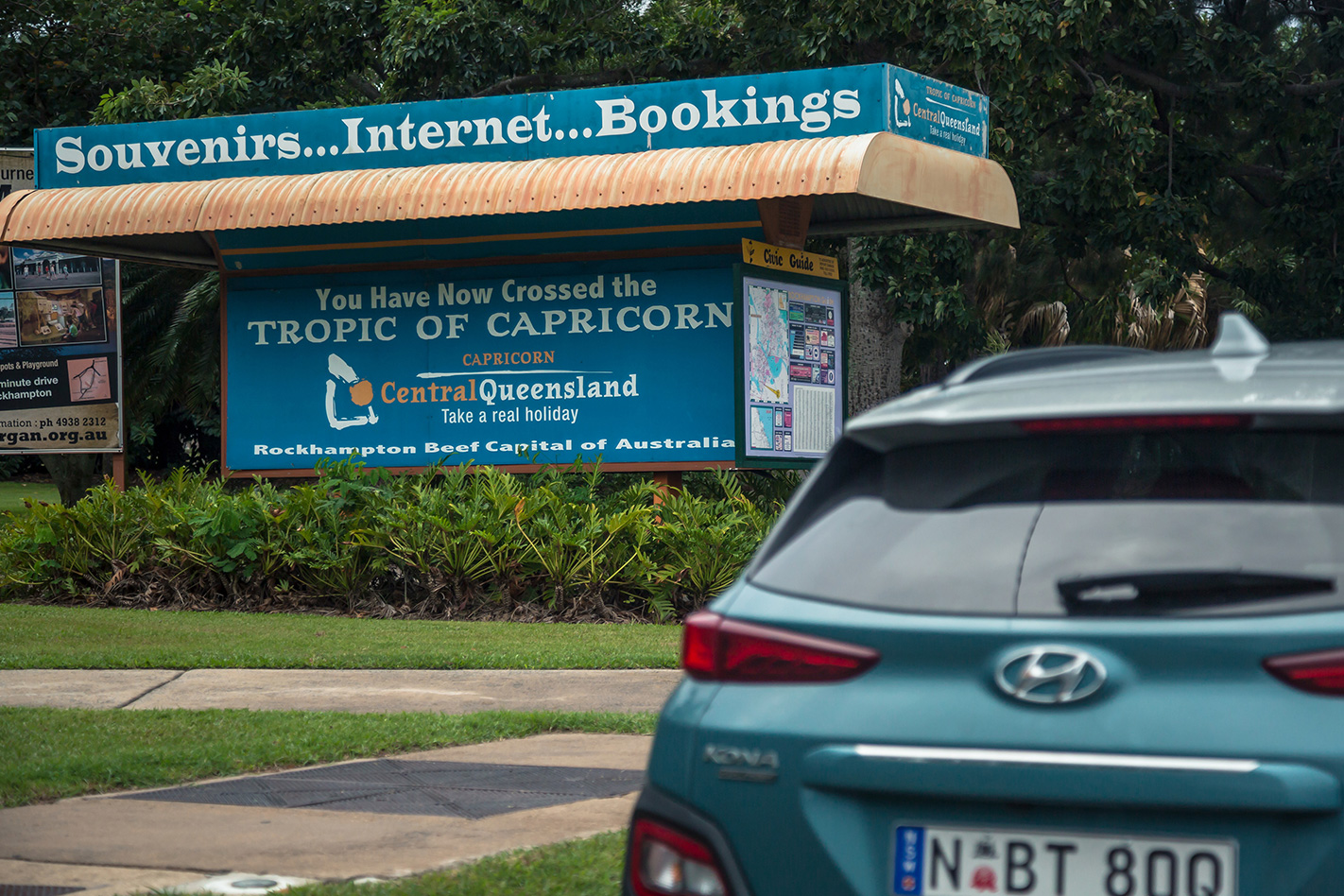
I switch to Eco+ drive mode, which cuts air-con and other non-essentials and limits speed to 80km/h. The cabin is a funk of nerves and sweat as we creep along, with windows up to reduce drag and without air-con in the humid, 34-degree heat.
Remarkably, as we edge closer to Cairns, the Kona slowly hauls back the deficit via its regenerative braking and we make the charge point with 5 percent of battery and 15km in reserve.
We breathe a huge sigh of relief, at having avoided falling short of our goal in such ignominious circumstances, and plug in for the final time while Thomas sets off to bag ‘the’ shot to wrap up our adventure. The odometer confirms we’ve travelled 2122km in four-and-a-half days on five shots of green power, six if you include Cairns. Charging time has added roughly seven hours to our journey, although we haven’t tracked it fastidiously. We could have done the trip much quicker, undoubtedly, but that was never the point – not with Thomas and his Canons in tow.
For the eco-conscious EV buyer, and taking at face value Yurika Energy’s claim that its chargers are carbon-neutral, we’ve saved an estimated 288kg of CO2 compared with either of the ICE-powered Kona models. Were we paying for the recharges, using an approximate electricity price of $0.34/kWh and our trip average of 14.7kWh/100km, recharges would have cost in the vicinity of $105, compared to an estimated $240 in the ICE Highlanders.
However, at $65K the Highlander EV’s price tag will prove a substantial barrier for many motorists, and it’s difficult to see how the economic modelling for the car stacks up given it costs $25K-30K less to get into one of the petrol Kona Highlanders.
What we have shown, though, is that such a trip in an EV is perfectly feasible – on Queensland’s Bruce Highway at least. Elsewhere Australia has a long way to go before EVs can embark on such journeys as a matter of course. In a classic chicken-and-egg scenario, the charging infrastructure needs to develop to support the uptake of EVs, and the uptake of EVs is slow because of a lack of charging infrastructure.
But it will happen and, if our experience of the Kona is anything to go by, it will start to happen quickly, because the car is really very good. If you can get over the valid concerns about range, charge time and access to charge points, there’s nothing about the Kona EV that’s inferior to an ICE version; and in some areas, such as rolling acceleration, it’s vastly superior.
Our journey and interactions with people along the way also tell us that many Australians are genuinely excited and intrigued about the arrival of EVs. As the age-70-something couple out working up a sweat on the Bowen foreshore told us: “Seeing them [EVs] out in regional Australia, and seeing them at charging stations like this, makes them seem more real.”
It’s a sight set to be repeated across the country as this once fanciful form of transportation shifts into the mainstream, from the pages of sci-fi novels, to a garage near you.

